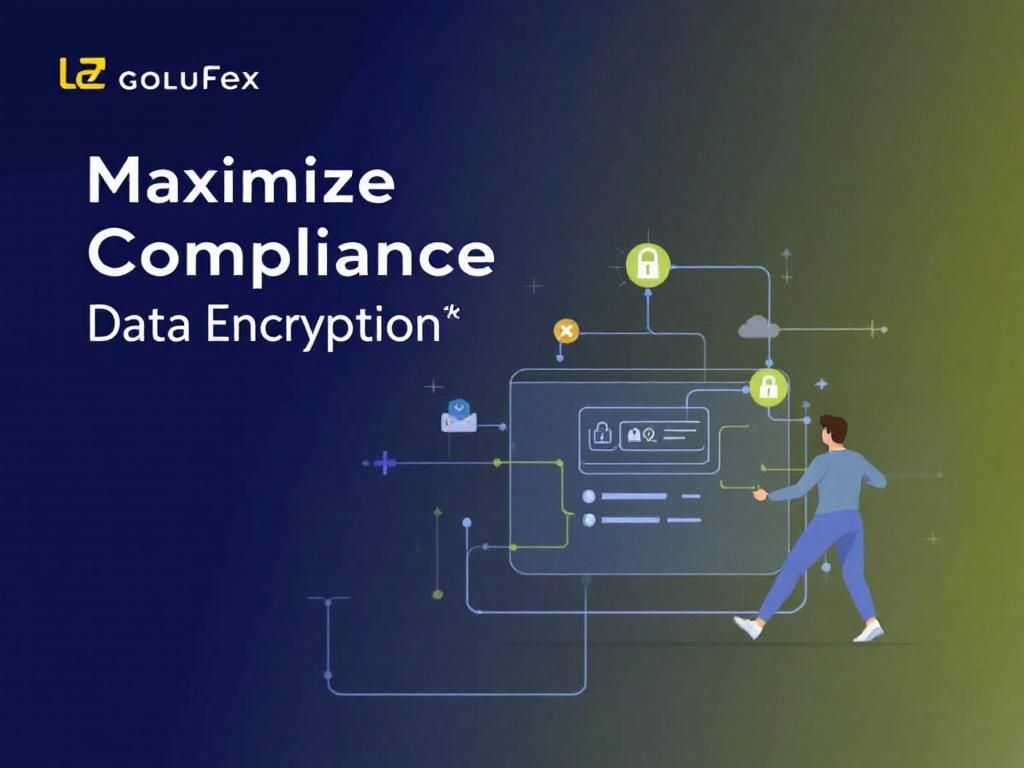Top Compliance Encryption Strategies to Secure Your Data
Discover essential encryption strategies for data compliance and security to protect your sensitive information from breaches.

In today’s digital landscape, securing sensitive information is crucial for businesses and individuals alike. With the increasing number of cyber threats and data breaches, establishing robust compliance encryption strategies is more important than ever. Encryption not only protects data but also ensures compliance with various regulations, safeguarding your organization against legal and financial repercussions. This article delves into effective encryption strategies that can enhance your data security and compliance posture.
Table of Contents
Understanding Encryption
At its core, encryption is the process of converting information or data into a code to prevent unauthorized access. It essentially transforms readable data (plaintext) into an unreadable format (ciphertext) using algorithms and keys. Only those who possess the correct key can decrypt the data back to its original form. This process is critical for protecting sensitive information, such as personal identification, financial records, and confidential business data.
Types of Encryption
There are two primary types of encryption that organizations typically employ:
- Symmetric Encryption: This method uses the same key for both encryption and decryption. It is faster and more efficient, making it suitable for processing large volumes of data. However, key management can be challenging, as both parties must securely share the key.
- Asymmetric Encryption: In contrast, this method utilizes a pair of keys – a public key for encryption and a private key for decryption. While it provides enhanced security, it is slower and often used for securing smaller sets of data, such as transmitting sensitive messages.
Regulatory Compliance
Many industries are governed by strict regulations regarding data protection and privacy. Compliance with these regulations is not just a legal obligation; it also fosters trust among customers and stakeholders. Here are some key regulations that emphasize the importance of encryption:
- GDPR (General Data Protection Regulation): Enforced in the European Union, GDPR mandates stringent data protection measures, including encryption, for personal data.
- HIPAA (Health Insurance Portability and Accountability Act): In the healthcare sector, HIPAA requires encrypted communication to protect sensitive patient information.
- PCI DSS (Payment Card Industry Data Security Standard): Organizations that handle credit card transactions must adhere to PCI DSS, which includes encryption protocols to secure payment information.
Implementing Effective Encryption Strategies
To create a robust encryption strategy, organizations should consider the following steps:
1. Assess Your Data
Identify the types of data that require encryption. Not all data is created equal, and it’s essential to prioritize the most sensitive information.
2. Choose the Right Encryption Method
Determine whether symmetric or asymmetric encryption is appropriate for your needs. Consider factors such as data volume, sensitivity, and regulatory requirements.
3. Establish Key Management Practices
Effective key management is crucial for ensuring the security of encrypted data. Implement the following best practices:
- Regularly rotate encryption keys to minimize the impact of a potential key compromise.
- Store keys in a secure location, separate from the encrypted data.
- Utilize hardware security modules (HSMs) for enhanced key management.
4. Implement Encryption at Multiple Levels
Consider encrypting data at different levels, including:
- Data-at-rest: Encrypt data stored on servers and databases.
- Data-in-transit: Use protocols like SSL/TLS to encrypt data transmitted over networks.
- End-to-end encryption: For applications like messaging, ensure end-to-end encryption to protect data from sender to receiver.
Challenges in Encryption Implementation
While encryption is a powerful tool for securing data, organizations may face several challenges during implementation:
1. Performance Impact
Encryption can introduce latency, particularly with larger datasets. Optimizing encryption methods and hardware can mitigate this issue.
2. Cost Considerations
Implementing encryption solutions may incur costs related to software, hardware, and training. It’s essential to assess the return on investment (ROI) by considering the potential costs of data breaches.
3. Complexity of Key Management
Managing encryption keys can become complex, especially as the volume of encrypted data increases. Investing in automated key management solutions can simplify this process.
Future Trends in Data Encryption
As technology evolves, so do encryption methods and strategies. Here are some emerging trends to watch for:
| Trend | Description |
|---|---|
| Homomorphic Encryption | A revolutionary encryption method that allows computations to be performed on encrypted data without decrypting it, enhancing privacy and security. |
| Quantum Encryption | Utilizes principles of quantum mechanics to create encryption methods that are theoretically unbreakable, paving the way for unprecedented data security. |
| AI-Driven Encryption | Leveraging artificial intelligence to optimize encryption algorithms and enhance key management practices. |
Conclusion
In an era where data breaches can have devastating consequences, establishing a robust encryption strategy is paramount. By understanding the types of encryption, regulatory requirements, and implementing best practices, organizations can effectively secure their data and ensure compliance. Embracing emerging trends in encryption will also position businesses ahead of potential threats, safeguarding sensitive information for years to come.
FAQ
What is data encryption and why is it important for compliance?
Data encryption is the process of converting information into a coded format to protect it from unauthorized access. It is crucial for compliance as it helps organizations safeguard sensitive information and meet regulatory requirements.
What are the best encryption strategies for securing sensitive data?
Best encryption strategies include using strong encryption algorithms, implementing end-to-end encryption, regularly updating encryption keys, and employing multi-layered security measures.
How does encryption help with data compliance regulations like GDPR and HIPAA?
Encryption helps organizations comply with regulations like GDPR and HIPAA by ensuring that personal and health information is protected, reducing the risk of data breaches and potential fines.
What are the common challenges organizations face when implementing encryption?
Common challenges include selecting the right encryption standards, managing encryption keys securely, ensuring compatibility with existing systems, and training staff on encryption policies.
Is encryption enough to ensure data compliance?
While encryption is a vital part of data compliance, it should be combined with other security measures such as access controls, regular audits, and employee training to ensure comprehensive protection.



